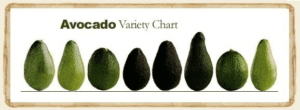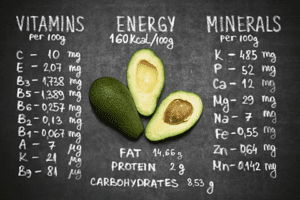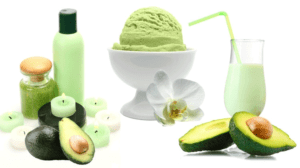AVOCADO
THE GOD OF MEXICAN FRUITS
If you’ve been to Mexico (or read our blog), you know our beautiful country has a wide variety of delicious fruits. Today I’m here to tell you all about one of, if not my favorite: Avocado! I love it so much that I’ve geeked out on it to present this in-depth, yet quick, look at this fascinating delicacy. Grab your Guac and chips and follow me on this journey.
THE ROOTS OF AVOCADO
The “Green Gold” has controlled our palates since the beginning of times, since the arrival of the first hunter-gatherers in Mesoamerica. According to ancient history, they began cultivating avocados by learning that dropping a seed into the ground gave rise to a new plant, then they started to select and protect the trees that had the best fruits, the largest ones with smaller seeds. Avocados were abundant and required very little processing to be consumed and so quickly became an essential part of the daily diet.
Found in an old painted manuscript, the Mendoza Codex, there are several references to the relationship of the “Ahuacatl” with the Mexicas. This manuscript describes the life and customs of the people who inhabited the town of Ahuacatlán, a place located in the state of Jalisco, where avocados abounded and were typically used as tribute payment to the Mexicas, indicating the value that ancient cultures placed on this fruit.

source: Reyesgutierrez.com
In Spanish, we call it Aguacate which comes from the Nahuatl word “ahuacatl”, referring to “testicle”. Perhaps the Nahuas got inspired by the fruit shape or from how it looked while hanging from the tree. Mexicas knew that for proper pollination, avocado trees needed to grow in pairs, close to each other, male and female at the same time, and so they considered the fruit a symbol of love and fertility.
MANY SHADES OF GREEN
The Persea Americana, best known as Avocado, belongs to the Lauraceae/Laurel family and currently contains about 85 species, most of which are found in Michoacan, Mexico, Chile in South America, and the southern area of the United States of America in California.
Avocados are mainly divided into 3 races:
-The Mexican (Persea Americana, variety drymifolia)
Native to Mexico and is characterized by the anise-like odor of the leaves and by small, thin-skinned fruits of rich flavor and excellent quality. Mexican avocados are the hardiest, growing in regions too cold for other types. You can find plenty of these in the markets in Playa del Carmen, Tulum, and Mérida.
-The West Indian (P. Americana, variety Americana)
The most tropical in character is limited in the United States to southern Florida. But b
-The Guatemalan (P. Americana, variety guatemalensis)
Native to the highlands of Central America, is slightly less frost-resistant than the Mexican and produces fruits of medium to large size, characterized by thick woody skins and a ripening season different from that of the others.

source: Plantaraguacate.com
AVOCADOS FOR EVERYONE!
Conquered by the flavor, the Spanish took the avocado to Spain, and later on, the distribution of the avocado began worldwide.
By the early 1900s, growers saw the avocado’s commercial potential, and ever since, growers, enthusiasts, and researchers have been hunting for improved varieties. The introduction of the Fuerte Avocado variety to California in 1911, from Atlixco, Puebla, Mexico marked the expansion of the avocado industry. Then, by the late 1920s, the postman Rudolph Hass, cultivated an avocado tree in his backyard in La Habra Heights, California, and the mother tree of all Hass Avocados was born.

source:researchgate.net
NATURAL PROPERTIES
This delicious buttery fruit contains vitamins, minerals, healthy fats, fiber, and folic acid. All of these greatly benefit the muscular, cardiovascular, immune, and nervous systems, to prevent diseases and infections.
The avocado contains 14% potassium compared to 10% of bananas, ideal to help improve communication between muscles and nerves.
Avocado is also low in bad cholesterol and triglycerides and helps increase good cholesterol levels.
The perfect balance between health and pleasure.

source: natureseal.com
OTHER USES
Avocado is used in the elaboration of beauty products such as body and face creams, shampoos, oils, and soaps.
Avocado uses in other countries:
-In Brazil, they make ice cream with it.
-In Japan, they add it to sushi rolls.
-In Cuba, they mix it with capers, olives, lemon juice, and olive oil and serve it with boiled fish.
-In Mexico, we put avocado on every possible dish because we just love it.
As if this were not enough, the great wood provided by the tree is used for cooking utensils or even to make guitars.

source: gob.mx
Certainly avocado has won its place in Mexicans’ daily diet, and due to all its benefits and ways to eat it, avocado has also conquered the world.
Whichever of its varieties you taste, you won’t deny there is nothing like it.
On your next visit to Mexico or the Mayan Riviera, make sure to eat as many avocados as you can, and maybe ask locals where to find the best local produce.
Until our next meal.
-Abbey-cado.





